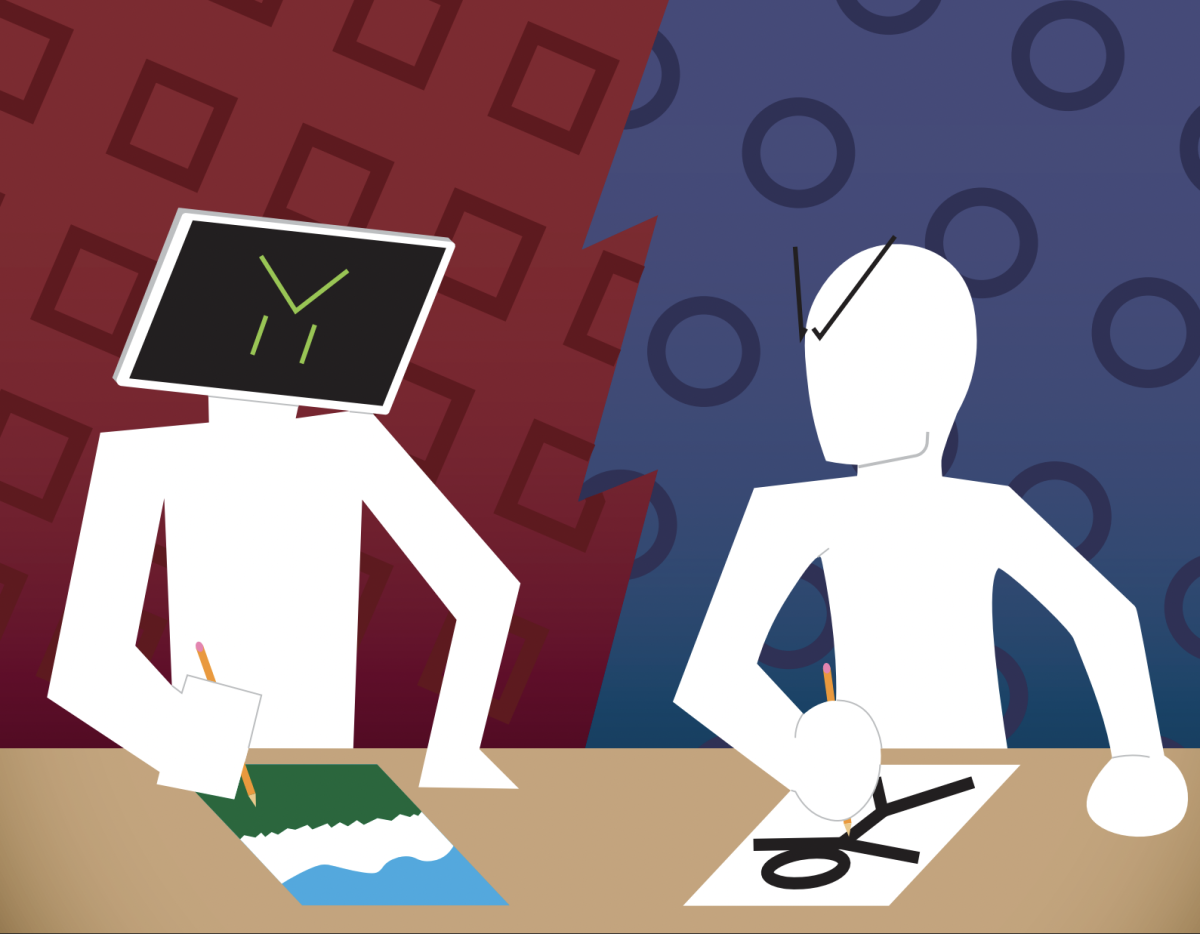The history of animal testing spans from ancient practices to modern sciences. According to Britannica’s ProCon, “Research on living animals has been practiced since at least 500 BC,” with philosophers such as Aristotle, Herophilus, and Erasistratus engaging in experiments on living animals. This ancient curiosity has continued into the modern era, manifesting in different forms of animal testing. Since 1948, animals have played a big role in the U.S. space program, contributing to tests that measure the effects of prolonged weightlessness. However, according to ProCon, controversies surrounding animal testing hit the spotlight in 2001 when “Dr. Michael Podell of Ohio State University undertook experiments infecting cats with the feline AIDS virus, aiming to understand the accelerated deterioration of methamphetamine users from AIDS symptoms.” This was one of the first times scientists had really considered the ethical implications of these experiments. With the rush to advance scientific knowledge, maybe we have gone too far.
Diving into the history of animal testing, vivisection, involving the dissection of living organisms, was popular in ancient Greece and extended to human criminals in ancient Rome and Alexandria. According to ProCon “Prohibitions against mutilation of the human body in ancient Greece led to a reliance on animals as experimental subjects.” Even in the 17th century, philosopher René Descartes occasionally experimented on live animals, including rabbits, eels, and fish. He believed that animals were incapable of experiencing pain or suffering. The 21st century introduces shift, with the European Union banning the import and sale of cosmetic products tested on animals in March 2013. President Joe Biden’s transformative move on Dec. 29, 2022, signing the FDA Modernization Act 2.0, is another example of movement in the right direction. This act, sponsored by Senator Rand Paul, eliminated the requirement for pharmaceutical companies to test new drugs on animals before human trials. On the topic of animal welfare, sophomore, Sophie Penton states, “I don’t equate animal life with human life. Humans have a higher level of consciousness and moral agency, but that doesn’t mean we should disregard the ethical treatment of animals.” Thus, while humans may be more intelligent, ethical considerations demand a better approach to the pursuit of scientific knowledge and progress.
As we navigate the history of animal testing, it becomes imperative to confront the harsh reality of the experiments conducted. During tests, some dogs undergo the deliberate removal or damage of their hearts, lungs, or kidneys. These experiments aim to find out how substances might affect human organ function. Monkeys also find themselves at the center of animal testing. According to The Humane Society of the United States (HSUS), “Monkeys are taken from their mothers as infants to study how extreme stress might affect human behavior.” Furthermore, pregnant rabbits are force-fed toxic pesticides daily to observe the potential effects on human mothers and babies. Sheep, exposed to high pressures akin to deep-sea conditions, provide observations on their physiological responses. Rats are confined to small tubes for hours with cigarette smoke being shoved down their throats. This is to mirror the potential impact of cigarettes on humans. On the same note, horses are infected with potentially fatal viruses like hepatitis in order to observe their symptoms.
The pain inflicted on animals during these experiments is often excruciating, causing a spectrum of distressing outcomes. As highlighted by the HSUS, “Experiments are often excruciatingly painful for the animals used and can vary in duration from days to months to years.” Institutions all over from chemical and drug companies to universities and government facilities, partake in these experiments. The laboratory environment, as depicted by HSUS, subjects animals to immense suffering, where they are “typically kept alone in barren steel cages with little room to move around and few comforts.” However, while these instances raise ethical concerns, the context regarding animal testing plays a large role. According to senior Isabella Pearson, “Sometimes [animal testing] is necessary in lab work but for beauty products it’s not okay.” While the usage of animals in the beauty industry and science serves different purposes, it still remains crucial to confront and reevaluate our approach to these experiments.
While ethical considerations loom large in discussions about animal testing, advocates stress its important role in advancing medical research and ensuring the safety of new drugs and treatments. According to Stanford Medicine’s Animal Research program, animals are crucial in testing for side effects, including infertility, birth defects, liver damage, toxicity, or cancer-causing potential. As Stanford Medicine highlights, “Not only do we humans benefit from this research and testing, but hundreds of drugs and treatments developed for human use are now routinely used in veterinary clinics as well, helping animals live longer, healthier lives.” Additionally, nearly every medical breakthrough in the last 100 years has resulted directly from research using animals. For example, animal testing has helped treat conditions such as breast cancer, brain injury, childhood leukemia, cystic fibrosis, multiple sclerosis, and tuberculosis. Furthermore, ProCon states that vaccines tested on animals have “saved millions of animals that would otherwise have died from rabies, distemper, feline leukemia, infectious hepatitis virus, tetanus, anthrax, and canine parvo virus.” Moreover, chimpanzees share 99 percent of their DNA with humans and rodents, are susceptible to many of the same health problems as humans. In the end, animals often make way better research subjects than humans because of their shorter life cycles. These shorter life cycles allow for more comprehensive studies throughout their life span and across several generations. As freshman Nick Read puts it, “If it helps people and there’s no other way, why not?”
Despite the notable benefits attributed to animal testing, ethical concerns remain and have spurred better alternatives. Junior Josh Riggs adds his perspective, suggesting that “testing on artificial cells may be a better alternative.” According to Stanford Medicine, the development of “organs-on-chips” represents a groundbreaking approach, where tiny 3D chips, composed of human cells, mimic the structure and function of miniature human organs. These chips represent human organs and are connected through a circulatory system, forming a “human-on-a-chip” model. This enables researchers to assess multi-organ responses, providing valuable insights into how human systems react to different things like drugs, chemicals, infections, or diseases.
Another example is computer models that utilize existing information to predict the impact of medicines or chemicals on humans. This approach not only offers efficiency but also sidesteps the need for additional animal tests. Additionally, individualized medicine takes center stage, as cells from a cancerous tumor are used to test various drugs and dosages. This allows scientists to tailor treatments to specific individuals without having to use animals.
Advancements in technology extend to the utilization of 3D tissue printing, providing a platform to test drugs without resorting to animal subjects. According to Stanford Medicine, “Specialized computers use human cells to print 3D tissues that are used to test drugs.” This transformation of skin cells from patients, including those with Alzheimer’s disease, into different types of cells in the laboratory allows for testing new treatments without relying on animals. Furthermore, highly accurate 3D models of human organs, such as the heart, are developed using sophisticated computer programming and 3D imaging. Then, real-world data from healthy people and those with heart disease are inputted to simulate organ responses to new drugs, offering a more precise and relevant testing environment.
These alternatives address several advantages over animal testing. Not only are animal experiments time-consuming and expensive, but they also fail to accurately mimic the human body as according to Humane Society International (HIS), “animal studies fail to predict real human outcomes in 50 to 99.7 percent of cases.” Additionally, more and more people perceive animal testing as unethical, stressing the need for more humane and effective research methods. As technology advances, these alternatives present a compelling case for more ethical, accurate, and efficient pathways in all research fields.






